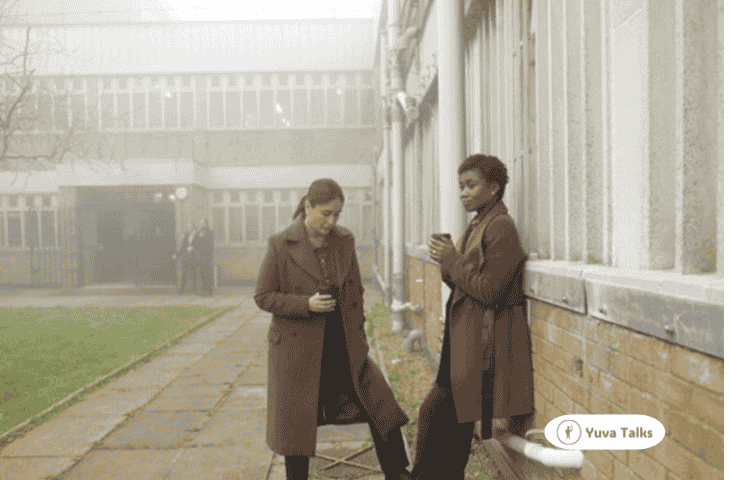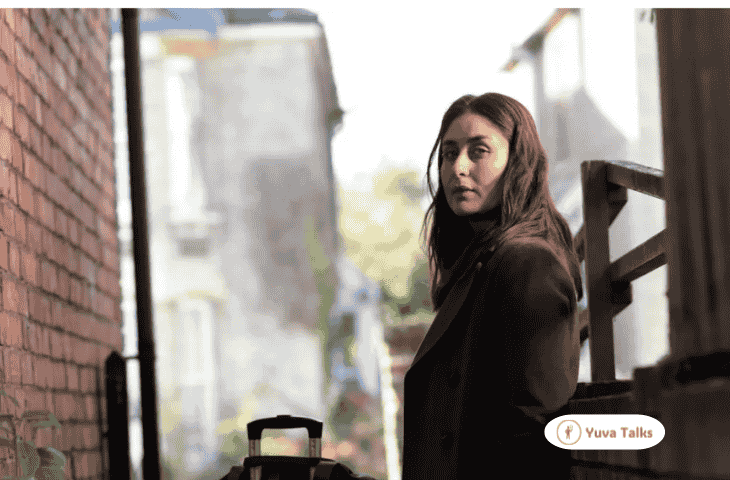| Release Date | 13 September 2024 |
| Language | Hindi, English |
| Genre | Thriller |
| Duration | 1h 50min |
| Cast | Kareena Kapoor Khan, Keith Allen, Chris Wilson, Ash Tandon, Haqi Ali, Adwoa Akoto, Ranveer Brar |
| Director | Hansal Mehta |
| Writer | Aseem Arrora |
| Cinematography | Emma Dalesman |
| Music | Karan Kulkarni |
| Producer | Shobha Kapoor, Ekta Kapoor, Kareena Kapoor Khan |
| Production | Balaji Telefilms, Cars on Film, Mahana Films |
| Certificate | A |
A gritty, “ripped from the headlines” police drama might evoke a familiar formula, but in the hands of a visionary filmmaker, the genre can take on an entirely new dimension. That’s precisely what renowned Indian director Hansal Mehta achieves with The Buckingham Murders.
Known in Bollywood for his bold socio-political stories, Hansal steps beyond his usual terrain by venturing into rural England, filming entirely on location, and collaborating with a predominantly British crew. Despite this shift, one key element of Indian cinema remains intact—Bollywood A-lister Kareena Kapoor not only stars in the film but also makes her debut as a producer.
The Buckingham Murders centers on Detective Jaspreet Bhamra (played by Kareena), a mother grappling with the devastating loss of her murdered son. Relocating to Buckinghamshire, she becomes entangled in the case of a missing child, which draws her into a tense conflict between Hindu and Muslim communities—a storyline inspired by the 2022 Leicester riots, where over 50 individuals were arrested.
Hansal, who won the National Film Award for Best Director in 2013 for Shahid, masterfully navigates the film through a blend of gripping plot, deep character exploration, and social commentary. Following its premiere at the BFI London Film Festival, we caught up with Hansal to delve into the film’s unique journey.
Also Read:- The 20 Best Sci-Fi Movies on Netflix (Aug. 2024)
Origin of The Buckingham Murders Concept

The concept for The Buckingham Murders was sparked when my writer, Aseem Arrora, presented a crime detective story set in the UK. I was immediately captivated by the crime detective genre, as it was something I hadn’t explored before. What intrigued me further was the opportunity to delve into deeper themes like grief, isolation, and motherhood. My aim was to create a film that, while set in England, wouldn’t follow the typical Bollywood formula but would instead feel grounded and resonate with a global audience.
Also Read:- The 10 Best New Movies On Netflix In August 2024
The Choice of a Female Protagonist in a Predominantly Male Genre
The story was originally crafted with a female protagonist, which was one of the elements that drew me to it. From the beginning, we knew that casting a major star was essential, and we started this journey back in 2019. However, the project faced delays, including the onset of the pandemic, causing further halts. During the process, we often found ourselves revisiting the story, as it would sometimes lean too heavily into the murder mystery aspect or become too focused on human drama. Striking the right balance was key. Additionally, my time was divided while working on Scam 1992 for Sony in India, which later became a huge success.
Working with Kareena Kapoor: Her Enthusiasm and Reaction to the Script

Kareena Kapoor joined the project in late 2020, and from the start, her enthusiasm was evident. Despite her immense stardom, which spans decades, I was initially uncertain whether she would take on the role. However, she was incredibly open to pushing her boundaries as an actor. There’s an untapped depth of talent and emotion in Kareena that I wanted to explore, and she embraced this challenge wholeheartedly.
Also Read:- Best movies on Amazon Prime Video to watch now
Incorporating the Hindu-Muslim Divide in the Film
The themes of division and the search for identity have been recurring motifs in my films. The polarization between communities, particularly Hindus and Muslims, is something I’ve consistently explored. It’s about understanding how people navigate their personal identities while living their everyday lives in a complex world.
Understanding UK Law Enforcement and Its Differences from India

The workings of law enforcement in the UK were quite distinct from what we initially expected. Our early understanding of the procedures was based on what we had seen in films or how things operate in India. However, as we researched more, we realized the differences. One key aspect was that detectives in the UK are not regular police officers with uniforms and guns. This meant that the thriller had to rely more on intellectual investigation rather than physical action.
The Role of Consultants and British Crew in Ensuring Accuracy
We worked closely with consultants from UK law enforcement to ensure the accuracy of the procedural elements. My co-writers, Raghav Raj Kakker and Kashyap Kapoor, frequently interacted with them to clarify details. I constantly sought validation on whether certain aspects truly occurred. Our British crew, including production designer May Davies, costume designer Charlie Knight, and director of photography Emma Dalesman, were instrumental in getting the right look, feel, and authenticity in terms of hierarchy and investigation methods. They constantly corrected and guided us to ensure everything aligned with reality.
Also Read:- 20 Bollywood Movies For Dumb Charades
Experience of Working with a Predominantly British Crew

Working with a nearly all-British crew was an incredible experience. As an Indian filmmaker entering a foreign country, I approached the setting much like a tourist—captivated by the sights, sounds, and overall atmosphere. The crew, on the other hand, had a deep familiarity with the location, which allowed them to focus more on the human elements of the story. While I brought a fresh perspective to the canvas, drawn to the drama and newness of the place, they enhanced my understanding of the human dynamics at play. It was a perfect blend—my fresh outlook on the location married with their expertise in capturing the human drama.
Biggest Challenge of the Production
One of the major challenges during the production was seamlessly blending English and Hindi within the film. I wanted to ensure that those who primarily understand Hindi could still fully grasp the story without needing to know English, and vice versa. The goal was to maintain a natural flow for both languages, striking the right balance so that no language felt forced or out of place. This required careful attention to dialogue and pacing to make the linguistic integration feel organic.


